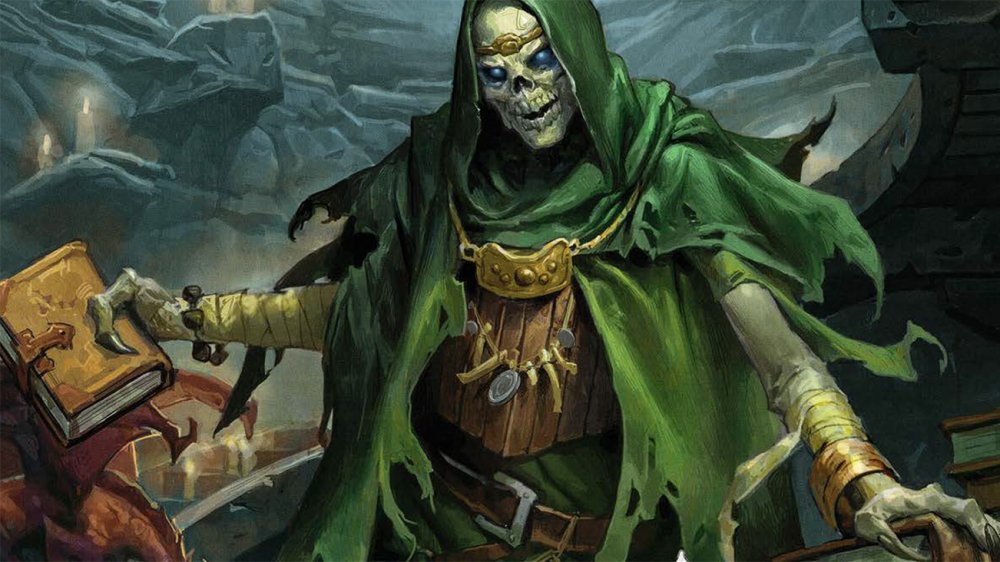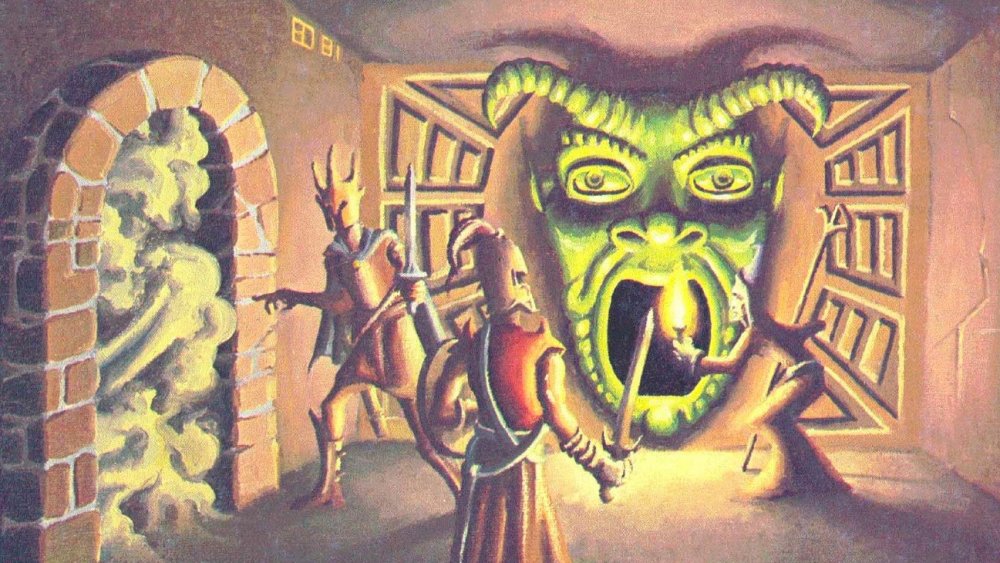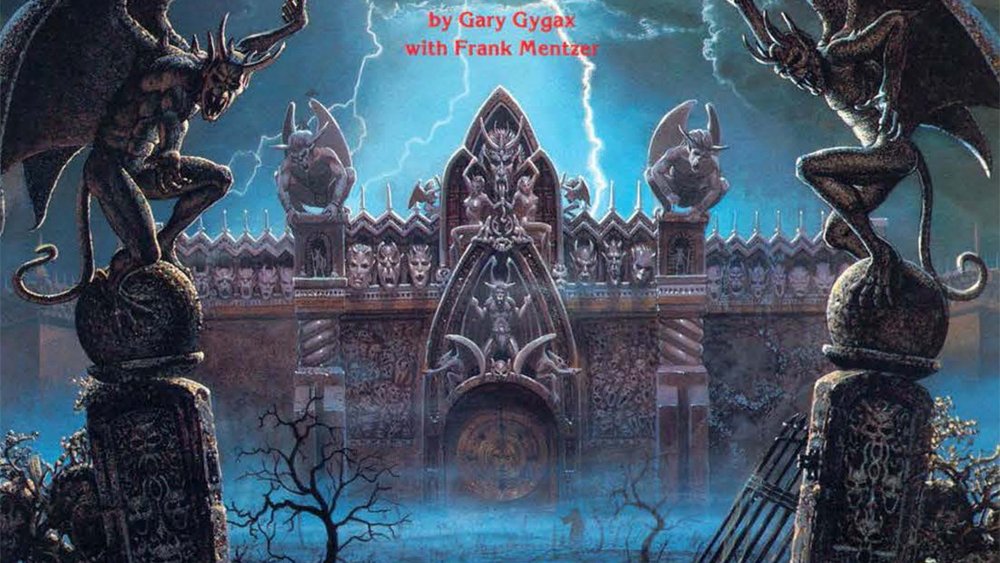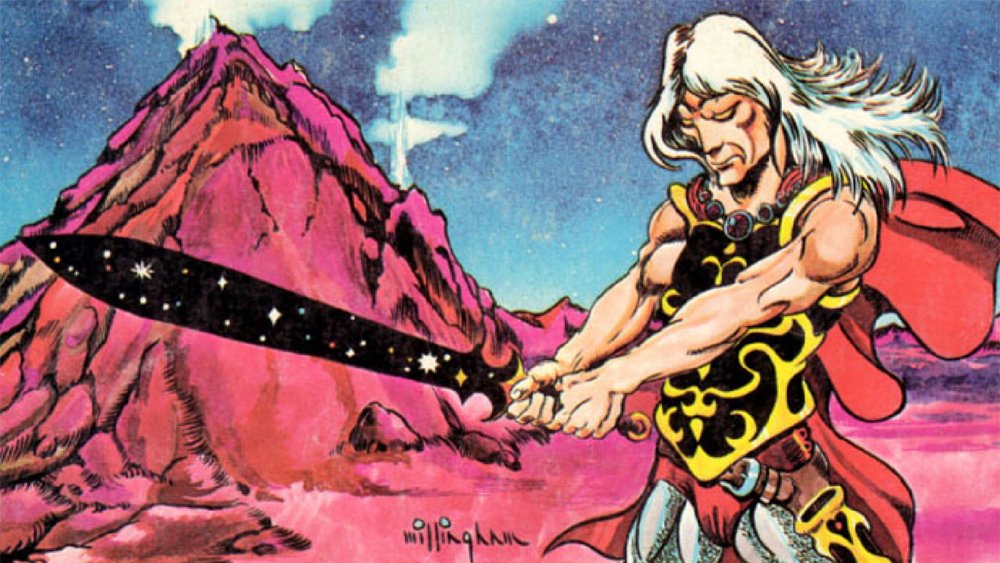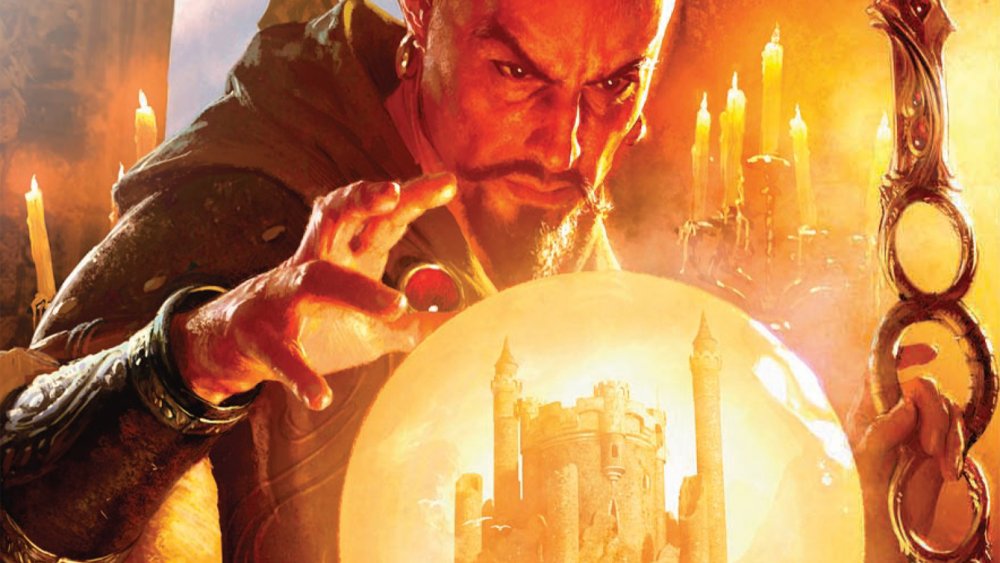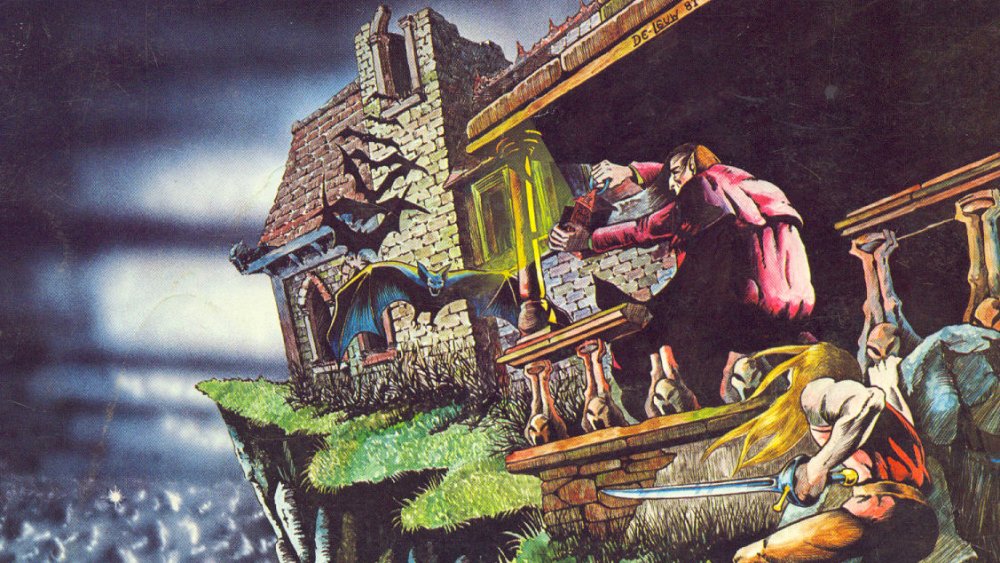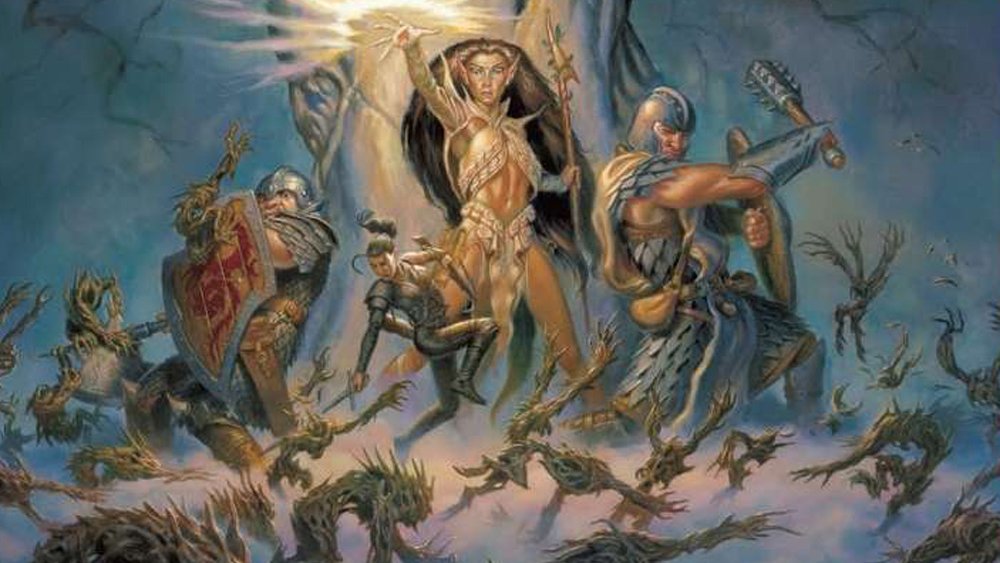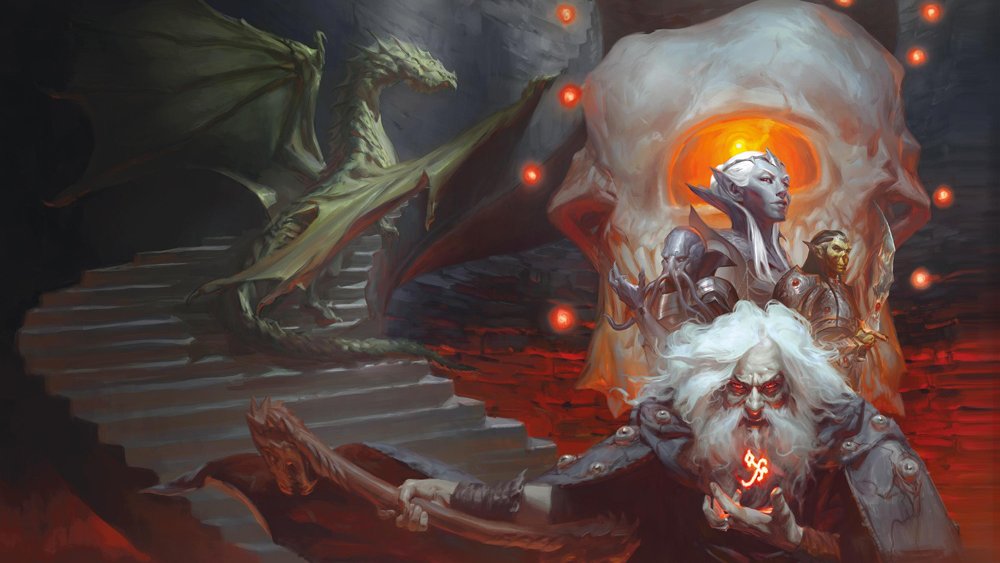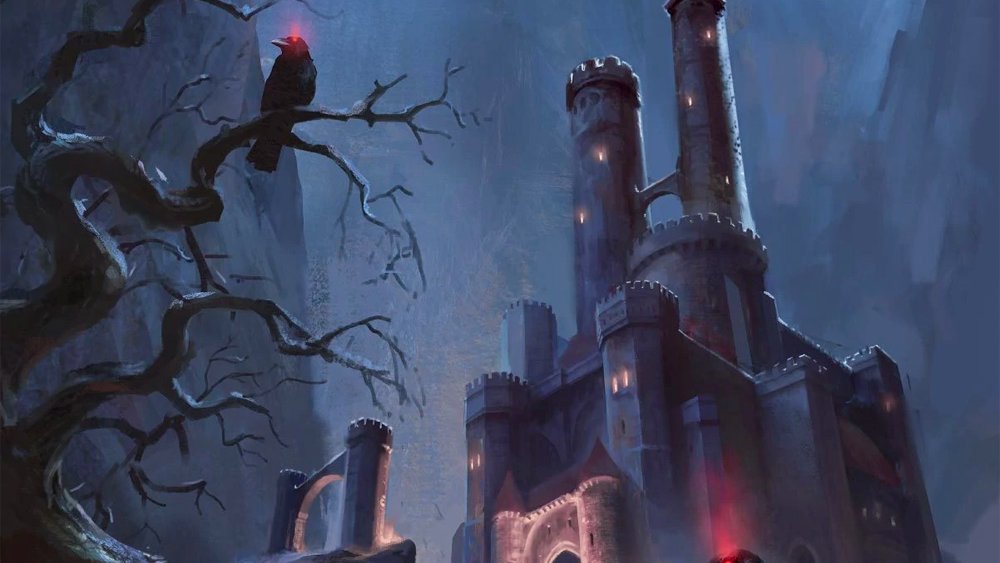The Most Famous Dungeons & Dragons Adventures Ranked Worst To Best
We may receive a commission on purchases made from links.
Dungeons & Dragons has a controversial history, but right now, it's experiencing an incredible renaissance. Thanks to a streamlined set of rules released in 2014, the ease of playing with distant friends online, and high-profile celebrity gaming projects like Critical Role and The Adventure Zone, a whole generation of new players are diving right into the world of tabletop adventure. And that means they're discovering that not all dungeons are created equal.
In the 40+ year history of D&D, there have been hundreds of adventures published for players to experience, sending them to unknown islands, keeps on the borderlands, and all kinds of horrific tombs. Over the years, the sites of a few of those adventures have become famous, but it's not always because they lead to a fun time. While some are an absolute blast, others are a bit more maddening. So without further ado, here are the most famous D&D adventures, ranked from worst to best.
Tomb of Horrors is classic Dungeons and Dragons ... but it's not much fun
Originally designed by D&D co-creator Gary Gygax as the ultimate test for players competing at the first-ever Origins gaming convention in 1975, Tomb of Horrors lives up to its name. It's an infamously lethal deathtrap — one loaded with seemingly impossible puzzles and sadistic hazards with dire consequences for even the smallest misstep — that's sent countless players to their doom as they've tried to plunder the treasure of a phenomenally powerful demilich called Acererak. That level of difficulty and danger has given it a legendary status among D&D fans, making it one of the most well-known, and even beloved, adventures of all time. The thing is, it's not actually fun to play.
To be entirely fair, it's not really meant to be. Gygax designed it to be a punishing meat grinder specifically for "expert" players, who were warned in advance that they'd need to be very, very careful to make it more than ten feet into the dungeon without being instantly and irrevocably destroyed. Even so, it's hard to imagine that most players wouldn't be frustrated to the point of table-flipping. There's the "Three-Armed Gargoyle Statue," that requires you to put a gem in each of its hands and watch it crush them to powder three times — nine gems total, a small fortune for your above-average adventurer — and even then, it provides a treasure that's specifically written to be both invisible and easy to lose. There's the "Cavern of Golden and Silver Mists," where you'll find a trap causing you to "become an idiot." There's the "Huge Pit Filled with 200 Spikes," which ... well, you can probably figure that one out.
Of course, like all D&D adventures, whether or not it's fun depends more on how it's run than how it's written. On The Adventure Zone, for example, Griffin McElroy ran it as a "virtual reality training simulation" where the characters lost "lives" like a video game each time they were killed, which removed the unfair consequences while keeping the hilariously unexpected deaths. Either way, Tomb of Horrors is one of the few adventures to be rewritten and re-released for every single edition of D&D. Who knew people would love being vaporized with no warning so much?
The Temple of Elemental Evil is more important than it is interesting
Water. Earth. Fire. Air. Long ago, the four nations lived together in harmony. Then, everything changed when — wait, no, sorry. That's a different long-running, element-themed adventure. This is the one that starts off in "the village of Hommlet," which is the high fantasy equivalent of "the City of Townsville."
So here's the thing. Even the worst of D&D's most iconic adventures are still pretty good, and there's a lot to love about The Temple of Elemental Evil. It has a detailed village for an adventuring party to use as a home base, a conspiracy that adds a little problem-solving role-playing to the adventure, and an ancient ruin teeming with definitively evil bad guys who want to destroy and/or rule the world. It's arguably the first great campaign-sized dungeon crawl, and it's so foundational for D&D that virtually every big dungeon that came after it was building on themes that were used here.
However, there are a few rough patches, which have also unfortunately been carried forward into other adventures. The eponymous temple has a rich backstory that details a titanic battle between good and evil, which the people actually playing the adventure are a decade late to be involved in. Hommlet is full of interesting characters, including high-level NPCs who are completely uninterested in helping your six-hit-point wizard stop a world-conquering death cult. "Elemental Evil" sounds good, but the straightforward idea of bad guys with elemental powers gets muddled with the various demons lurking in the background. It's by no means a bad dungeon, but in a way, it's a victim of its own success. So many other adventures have built on its foundations that there's not a lot in here that isn't done better somewhere else.
White Plume Mountain is weird, magical, and metal
When you hear the words "Dungeons & Dragons," there are a few things that come to mind as elements you'd expect to find in an adventure. Cramped underground tunnels with fantastic treasures waiting at the end. Deadly monsters and strange magical traps crafted by some mystical weirdo who wants to test your mettle. Powerful weapons that can give you the strength to conquer these impossible odds.
All of those things can be found in White Plume Mountain. Written by Lawrence Schick and released in 1979, it's arguably the most Dungeons & Dragons adventure there is, full of pieces that completely abandon trying to capture an epic, Tolkienesque story in favor of the kind of encounters that only make sense in a game, right down to its handy ten-foot corridors and not one but three magic weapons, all hidden away inside an active volcano. The traps are clever, the layout is surprising, and it still feels fresh today — partly because it seems more like something out of a Zelda game than the old-school dungeon crawl that it is.
And those weapons! Sure, one of them is a warhammer with the, uh, underwhelming name of "Whelm," but one of the others is a sword that looks like outer space named Blackrazor, which is the coolest thing you could possibly call a sword. Plus, it passes the ultimate test of a D&D weapon — would it look rad as hell painted on the side of a custom van?
Expedition to the Barrier Peaks gives Dungeons & Dragons a sci-fi twist
The best thing about Expedition to the Barrier Peaks might just be the name. It's generic to the point of being dull, and it tells you nothing about the adventure inside the cover. That's because calling it The One Where Your Halfling Wizard Fights Robots With Laser Guns would probably give away the surprise.
The "dungeon" in this adventure is actually not the kind of lost ruin or underground cavern that you'd find in other adventures. It's a crashed spaceship full of hostile aliens and malfunctioning robots, including an android karate master that you can trick into fighting other enemies for you. In one of its best moments, there's even, in classic Gygax style, an instruction for the dungeon master to look disappointed when the characters encounter a particular monster, and then tell them they see a cute little bunny rabbit sitting on a stump. This is, obviously, a trap. The stump is the monster, with a slightly Georgia O'Keeffeian fanged mouth and bludgeoning roots. The bunny is just the lure. The whole adventure is full of clever touches like that, ready to surprise any swords-and-sorcery fans who suddenly find themselves on the set of Alien.
The adventure definitely shows the signs of its age — there are multiple flowcharts that you have to go through every time you want to use one of the spaceship's advanced technology — but what it brought to the table, both literally and metaphorically, just can't be denied. It expanded what Dungeons & Dragons was and could be, reminding players that while it might be rooted in high fantasy, the ideas you could throw into your games had no real limits.
Castle Greyhawk is a goofy game with a complex history
Okay, so here's where things get weird — yes, even weirder than the spaceship and the idiot gas from Tomb of Horrors. Castle Greyhawk was originally created by Gary Gygax for his own campaigns with family and friends, and by the time D&D entered its first great boom period in the '70s, the default setting of most of the adventures was referred to as "the World of Greyhawk." The castle itself is even referenced in multiple adventures, including the weird but great Dungeonland, where your friendly, local adventuring party gets dropped without warning into Alice in Wonderland.
But despite having such a prominence in the larger lore of D&D, the castle itself was never detailed in any official source until 1988, when Castle Greyhawk was released as a sprawling, 13-level dungeon, with each level written by a different designer. It wasn't, however, what D&D players might have expected. It was a goofy parody of the tropes of role-playing games, full of groan-worthy gags like Drider-Man and the Inedible Bulk, the appearances by food mascots like Poppinfarsh the Dough Golem and Colonel Sandpaper, and a full-on game show called Steal a Fortune. It was so relentlessly stupid, in fact, that many saw it as the remaining D&D designers taking a shot at Gary Gygax himself, who'd recently left the company under somewhat acrimonious circumstances. There was, after all, a level that depicted Mordenkainen the Mage — Gygax's own character — as obsessively trying to make a film called Fantasy: The Movie, starring the players. Before his departure from the company, Gygax had been working on getting D&D projects off the ground in Hollywood.
Two years later, there was a more serious version called Greyhawk Ruins, eventually followed in 2007 with Expedition to the Ruins of Greyhawk, which was a massive, 200-page hardcover that not only detailed the castle itself, but also brought back its connection to things like Dungeonland. Surprisingly, they left Captain Kork and Mees Taspark out of that one, but taken as a whole, Castle Greyhawk's bizarre history makes it one of the most fascinating dungeons ever crafted — and one where you never really know what to expect next.
The Sinister Secret of Saltmarsh is Dungeons & Dragons with a Scooby Doo twist
At its heart, The Sinister Secret of Saltmarsh is basically just an episode of Scooby Doo, except that the bad guys get stabbed with swords and/or set on fire with magic spells after they're unmasked. There's still the potential to have a talking dog, though.
It's one of the best introductory adventures that the game has ever seen, largely because of how, like Expedition to the Barrier Peaks before it, it subverts expectations in a way that really works within the boundaries of D&D. The basic idea is that the players hear about a haunted house on the outskirts of the fishing village of Saltmarsh, and being adventurers, they decide to poke around and see what sort of murderous undead they can rustle up for some easy experience points. The twist is that the "haunted house" isn't haunted at all. It's just a bunch of smugglers taking advantage of the fact that haunted houses are a very real concern in this world to get away with their illegal activities.
A twist about the supernatural not actually being the problem in a world where you actually expect to be fighting bloodthirsty corpses animated by necromancy as your very first adventure is pretty difficult to pull off. Saltmarsh does it very well, though, and the fact that players are easily tricked into chucking a vial of Holy Water at a very real, very alive bandit who will suffer no ill effects other than a wet spot on his shirt is the kind of moment that makes it all worth it. There's a good reason this one was revived recently as the cornerstone for an entire book of seafaring adventures.
The Sunless Citadel is everything you want out of D&D
Since its inception in 1974, Dungeons & Dragons has essentially been revising and updating the same set of rules, many of which were — let's be honest here — wildly and needlessly complicated. In 2000, the publishers at Wizards of the Coast (WotC) threw all of that out, completely rebuilding the game for its third edition rules, hoping to draw in a new generation of players and spark an RPG renaissance, and it worked.
To get players familiar with the new rules, WotC also published Bruce Cordell's The Sunless Citadel, which — get ready for a hot take, folks — is arguably the single best introductory adventure the game has ever seen. If it has a flaw, it's that it's incredibly straightforward, but for new players (and experienced dungeon masters trying to get a handle on a new set of rules), having clearly stated goals and a relatively linear dungeon to move through isn't exactly a bad thing. Plus, what it might lack in plot twists and the open-world sandbox of more sprawling adventures, it more than makes up for in its solid design and interesting, memorable elements.
The whole thing revolves around a mysterious golden apple that can heal any wound, as well as its twin — a shriveled, pallid thing that brings instant death to anyone foolish enough to take a bite. They're the fruits of a tree that grew from a stake that slew a vampire, with that evil seeping into the plant life and giving rise to twig blights, little bundles of sticks that are actually plant creatures hungry for blood. Between the adventurers and the tree, the object of their quest, is the ancient ruin of a castle swallowed up by an earthquake in the distant past, taken over by hostile creatures, including a depressed kobold and his pet baby dragon. Yes, it's literally a dungeon with a dragon. It's everything you want from your first experience playing D&D, and honestly, a lot of the things you're going to want from your hundredth time, too.
Undermountain has rarely been equaled
For D&D fans, there are dungeons — like, say, White Plume Mountain or the Tomb of Horrors — and there are megadungeons. These are the massive, interconnected ruins that can take months, or even years, to explore. Undermountain is one of the latter, but it's not just a megadungeon. It's the megadungeon.
Located beneath, well, a mountain, obviously, but also the city of Waterdeep (and, more specifically, a tavern called the Yawning Portal), Undermountain was initially designed by Ed Greenwood, the creator of D&D's popular Forgotten Realms setting. It's the personal playground of the mad mage Halaster Blackcloak, possibly the weirdest of D&D's many weirdo dungeon designers, and it's specifically crafted to test anyone brave enough to descend into the well at the heart of the Yawning Portal and take their chances in the deadly halls beneath. It's huge, too. The current version from the appropriately titled Dungeon of the Mad Mage clocks in at a full 23 levels, including one featuring a tiny magical castle that shrinks adventurers down to action figure-size, a dumping ground for Halaster's failed attempts at new monsters, and an entire thriving underground city of thieves and pirates called Skullport.
In the decades since Undermountain first appeared in the pages of Dragon magazine, there have been plenty of other megadungeons to come along, from Rappan Athuk to The Emerald Spire to Eyes of the Stone Thief, an adventure where the dungeon itself is a living creature that eats entire towns to replenish its supply of mismatched rooms. However, they all descend from Undermountain, and they've rarely equaled the many fantastic versions of the original.
Castle Ravenloft is Dungeons & Dragons at its very best
If you ever need proof that Castle Ravenloft came out of the gate as one of the greatest adventures ever written, consider this. Since the original I6: Ravenloft, Tracy and Laura Hickman's Gothic castle has been re-released for almost every version of Dungeons and Dragons, and every one has used the exact same layout and maps for both the castle and the gloomy town over which it looms. The most recent version, Curse of Strahd, even uses the same descriptions for rooms that were written almost 40 years ago. Things have been added, sure, but there was never any need to change anything. Ravenloft got it right the first time.
It's built around an idea so simple that even calling it an "idea" almost feels like a stretch. It's just Dracula by way of D&D. Impenetrable, magical mists bring the party to a towering castle inhabited by Strahd, the ancient vampire who rules over his own plane of existence, detached from everything else. To get out, you've got to get through him, and to do that, you have to explore a castle that's full to bursting with creepy Halloween monsters, all while hoping to find the items you need to defeat him. The twist — one of many — is that the locations of those all-important items can be randomized at the start of the adventure by a Tarot-like card-reading, and that one of the characters you meet on your way is far more crucial to Strahd's existence than you expected.
It's not a perfect adventure, of course. In the original, Strahd's henchmen — given the fictional ethnicity of Vistani by the current version — are lifted straight from Dracula's Romani sidekicks in Bram Stoker's novel with all the cultural sensitivity that you'd expect from 1897. Also, in addition to some of D&D's best atmosphere, the dungeons of Ravenloft contain some of the worst puns in the history of the game, which is saying something. Even with those flaws, though, it's the iconic, legendary dungeon that spawned not only a sequel but an entire spooky publishing line.
